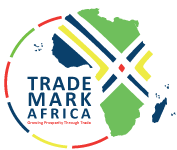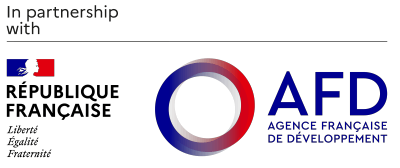It’s a busy lunchtime at the Grand Legacy Hotel in Kigali and Vincent Safari, Technical Adviser with TradeMark Africa (TMA) in Rwanda, is attending a meeting of Central Corridor member states. The Central Corridor is a transport highway used by trucks to carry goods between the port of Dar es Salaam and the states of Burundi, the Democratic Republic of Congo, Rwanda, Tanzania and Uganda. Vincent Safari is attending the meeting not only as a TMA technical advisor, but also as coordinator of the Rwandan National Monitoring Committee on non-tariff barriers, a group made up of representatives from the government, private sector and civil society and chaired by the Ministry of Trade and Industry.
Safari explains that although Rwanda has had a National Monitoring Committee since 2008, it was not effective because there was no national strategy in place to eliminate non-tariffs barrier (NTBs) and no full-time coordinator. In 2011 TMA became involved, assisting the Ministry of Trade and Industry to revamp the National Monitoring Committee so that it could become a driving force to eliminate NTBs at both national and regional level. “Before TMA got involved it used to take about 15 to 17 days to get to Kigali from either Dar es Salaam or Mombasa,” explains Safari. “Now from Dar it is between three and six days. And from Mombasa between five and seven days.” This significant reduction was achieved through a series of major interventions that emanated from partnerships between TMA and East Africa’s governments, including
Rwanda. Apart from easing congestion at the ports of Mombasa and Dar es Salaam, through improved infrastructure and support for 24 hours operations, TMA worked with regional revenue authorities, including the Rwanda Revenue Authority, to simplify customs procedures. It also advised the Rwandan government on making it easier to cross borders (through the construction of one stop border posts) and initiated an NTB reporting system that has reduced barriers such as weighbridges, customs checks and police road blocks. The NTB reporting system, an online portal through which truck drivers can report unnecessary, unauthorised or lengthy NTBs, is funded by TMA. Drivers can also use this portal to report the status of NTB elimination. In addition, the National Monitoring Committee meets quarterly to discuss progress and, if necessary, to report new non-tariff barriers. Unfair practices also NTBs Safari also attends regional meetings of National Monitoring Committee coordinators from the five EAC countries – where they hammer out what they consider to be unfair barriers to trade.
For example, through a Trucking Competitiveness Study carried out by the monitoring committees, it was revealed that Rwandan truck owners were required to pay three times the amount of road tolls in Tanzania that Tanzanian road users pay in Rwanda. This put Rwandans at a big disadvantage and the country registered it as an NTB at regional level. When it wasn’t solved the government took it up. Using the evidence-based research of the Trucking Competitiveness Study, the government argued its case, with the result that Rwandan truck owners now pay the same road toll charges. This successful advocacy effort represents an annual savings of US$800,000 for the Rwandan private sector.
Similarly, in 2013 the Kenya Railways Corporation introduced a 1.5% railway levy for each truck using the Mombasa-Nairobi highway, justifying it as necessary for railways development that would, when completed, ease congestion on the road. The private sector thought differently and complaints through the East African Community (EAC) regional forum on NTBs eventually led to the levy being lifted. At a lower level, yet just as important, is the reduction in cumbersome police roadblocks. “In Tanzania there were almost 35 police check points (up to the Rwanda border)”, explains Safari. “Now there are only eight gazetted checkpoints. It’s a big improvement that was achieved through the efforts of the National Monitoring Committee’s research and advocacy at regional level and the political will of the EAC partner states.”
Safari is equally enthusiastic about the reduction in the number of weighbridge stops, achieved by national monitoring committees, from seven to four in Kenya and from eight to seven in Tanzania. Not only that. “They have changed the systems,” he says, “to weighing in motion – trucks don’t need to stop as long as they used to. A truck is only stopped when it is overloaded. However when it conforms to vehicle load control requirements they always let it go.” In the bigger picture, what sort of impact has the reduction in NTBs, the expansion of ports and the simplification of Customs systems, had on trade in Rwanda? In the World Bank rankings known as Trading Across Borders, Rwanda’s position, while fluctuating, has decreased from 175 in 2006 to 164 today, an indication that something is working. However, the huge decrease in transit times as quoted by Safari, and substantiated by the private sector, is the biggest clue to the success of the Government of Rwanda and TMA’s interventions.
Safari foresees that the reduced transit time, accompanied by faster turnarounds and thus more journeys per month, will eventually be translated into a transport cost reduction, which must impact on the price of goods. “Almost 30% of the price of goods in Rwanda is for transport,” he states. “Reducing this portion should impact both imports and exports. East Africa is centred on the people. We want to see the final consumer saying that the price of goods is being reduced due to the interventions.” “I believe,” he concludes, as he makes his way back to the Central Corridor member states’ meeting, “ that if the costs of transport go down, it will have a huge impact on the man in the street.”
Source: TradeMark Africa (TMA)
Reducing non-tariff barriers in Rwanda equals reduced prices for all
Posted on: November 25, 2015
Posted on: November 25, 2015















